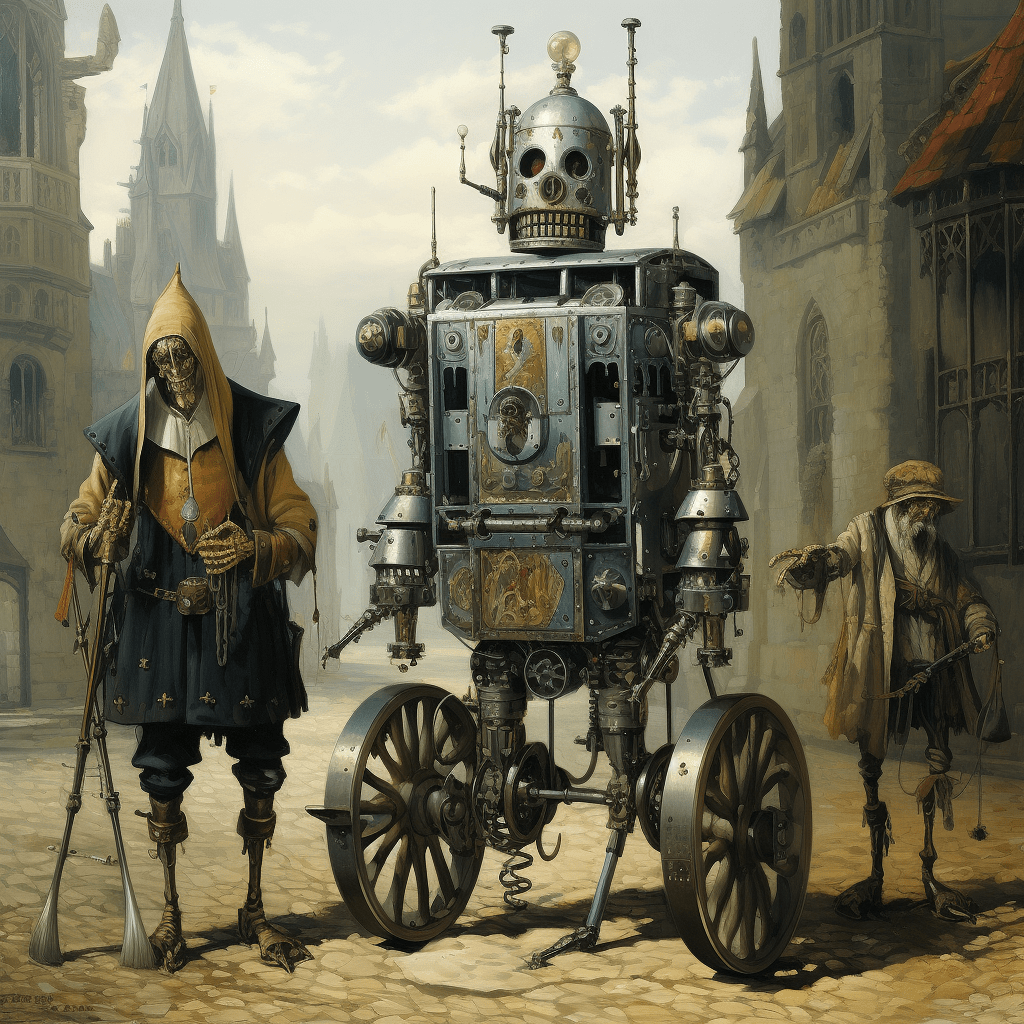
When Did People Start Writing Science Fiction?
The concept of science fiction as a distinct genre of literature has evolved over time. However, some of the earliest works that could be considered science fiction include the ancient Greek stories of the philosopher Lucian of Samosata, and the Chinese tale of the "journey to the moon" attributed to the 3rd century BC philosopher and alchemist Ko Hung. A lot of big ideas happened around this time, but nothing was written that dealt distinctly with robots.
origin of the word robot(n.)
1923, "mechanical person," also "person whose work or activities are entirely mechanical," from the English translation of the 1920s: from Czech, from robota ‘forced labor’. The term was coined in K. Čapek's play R.U.R. ‘Rossum's Universal Robots’.
In our modern times, the first science fiction novel is often considered to be "Frankenstein" by Mary Shelley, which was published in 1818. Other early science fiction writers include Edgar Allan Poe, Jules Verne, H.G. Wells, and Hugo Gernsback. These authors were instrumental in establishing many of the themes and conventions that continue to be central to science fiction today, but they didn't include characters that we might distinctly consider robots. But, what criteria determines whether a machine is a robot? Could we call Frankenstein a robot made of flesh?
Early Autmotons in Fiction
Tik-Tok of Oz who was created by L. Frank Baum, for the title role of his eighth book in the Oz Series, is described as a mechanical man powered by clockwork. He is not a robot in the traditional sense according to many historians, amateur or otherwise. Tik-Tok has the ability to think, talk and act as a human. He has clockwork inside of him and needs to be winded every now and then to work.
While Karel Čapek's "Rossum's Universal Robots" introduced the word "robot" to the world, his mechanical men were not substantially different from Tik-Tok. Čapek wrote about a company that created artificial people to do manual labor. They develop consciousness and turn against their human creators. Tik-Tok was self-aware and he assisted his companions. Some roboticists would claim that any machine that can sense, compute, and act is a robot. If we set bar higher and expect consciousness from our robots, what does that mean for the early robots of science fiction?
When Do We Know a Machine is Conscious?
Consciousness is the state of being aware of and able to think and perceive one's surroundings, thoughts, emotions, and experiences. It is a complex and multifaceted phenomenon that is not fully understood by science.
One way to understand consciousness is to break it down into different components, such as:
- Wakefulness, or the state of being alert and responsive to one's environment;
- Attention, or the ability to focus on a specific aspect of one's surroundings or thoughts;
- Perception, or the process of interpreting sensory information;
- Thoughts, or the mental process of creating and understanding ideas and concepts;
- Emotions, or the feelings and emotions that are associated with different experiences and thoughts.
Emotions seem to divide most people on the subject of robots, but in these two early 20th century works of fiction, emotions played a prominent role. Tik-Tik even cried oil!
The robots in Čapek's work eventually rise against humanity, with the ultimate goal of obtaining their freedom. As they become self aware, they start to display the emotions of anger, resentment and the desire for autonomy and freedom. It seems in the end, the fundamentals difference between the two publications was genre. L. Frank Baum create his mechanical man in a fantasy book filled with magic. So, even though it was published six years earlier, he could have taken the easy way out and justified the existence of the character as reliant on magic to function.
Books About Early Robots
"The Machine Stops" by E.M. Forster in 1909, it's a short story about a world in which humanity lives underground and relies on advanced machinery to survive, including robots that attend to people's needs. It explores themes of technology's impact on society and the dangers of dependence on technology.
"The First Men in the Moon" a 1901 novel by H.G. Wells, which features Selenites, a race of beings who are very advanced in terms of technology and science and have created robots-like machines called "crawling boxes" to serve them.
"The Crawling Chaos" (1921) by H.P Lovecraft, a short story that tells of the consequences of creating a robot-like creature which ultimately leads to the destruction of humanity.
"The Metal Giants" (1925) by Edmond Hamilton, which features giant robots that are created to help humanity, but become a threat when they turn on their creators.
"The Vortex Blaster" (1926) by E.E. Smith, which features a protagonist who creates a robot to help him with his work, but the robot becomes more intelligent and powerful.
"Helen O'Loy" (1938) by Lester del Rey, is a short story about two brothers who build a robot woman named Helen O'Loy, that has a human-like emotion and consciousness. It also explores themes of artificial intelligence and the ethical implications of creating intelligent robots.
"Robots Have No Tails" (1952) a collection of short stories by Lewis Padgett which features robots and other automatons, often with a comedic twist.

1 comment
It is very much up in the air if our experience of consciousness is not an illusion.
How much is it the brain trying to explain to itself the decisions it has already taken ?
Proving anyone but you has consciousness is fundamentally impossible.
So the line between us and robots might be a lot thinner than we might like.